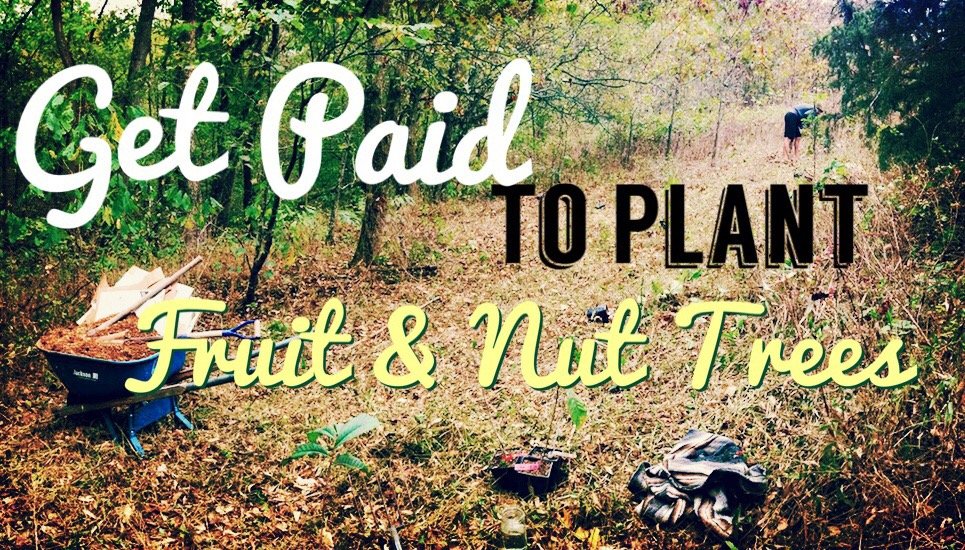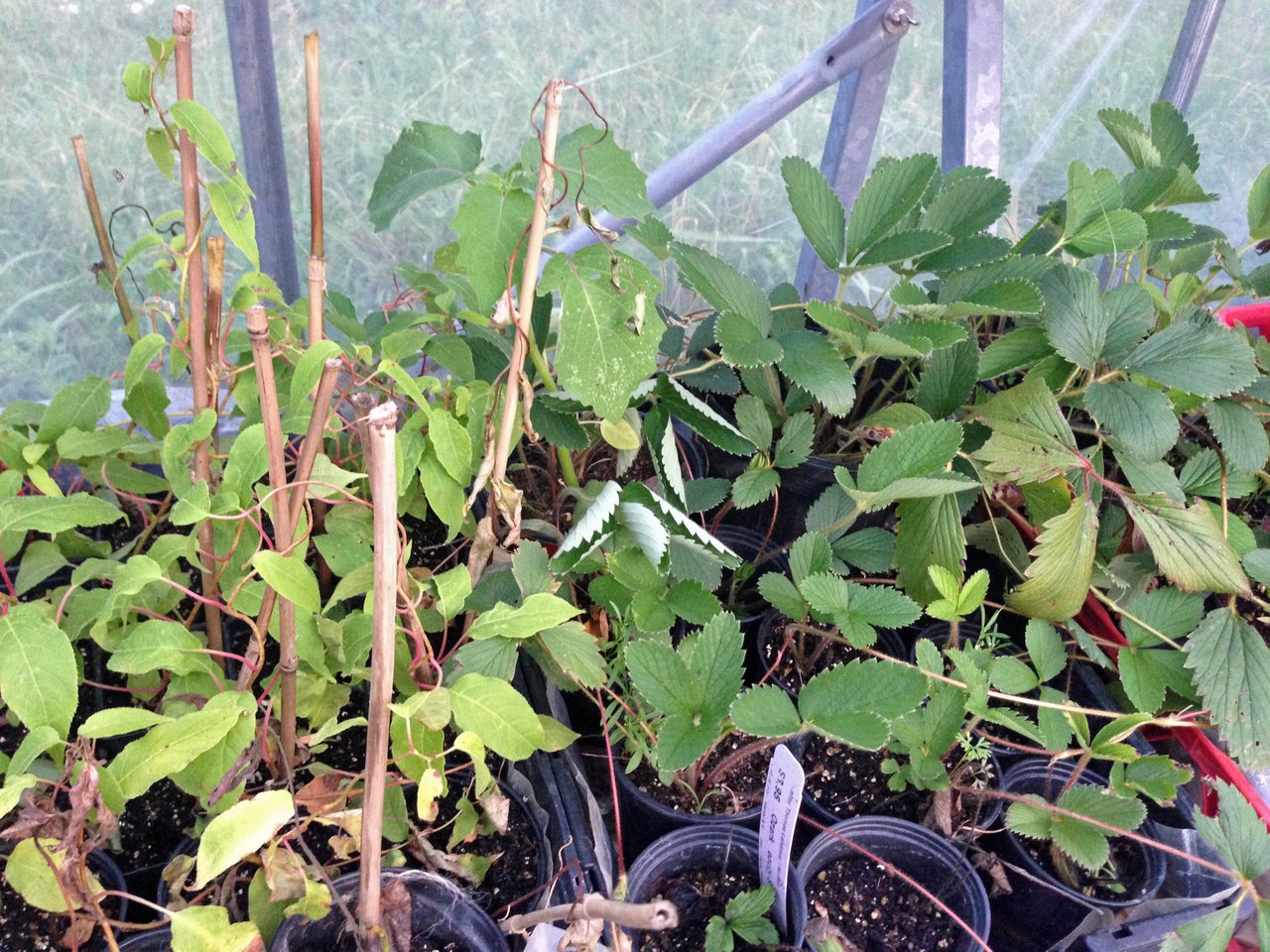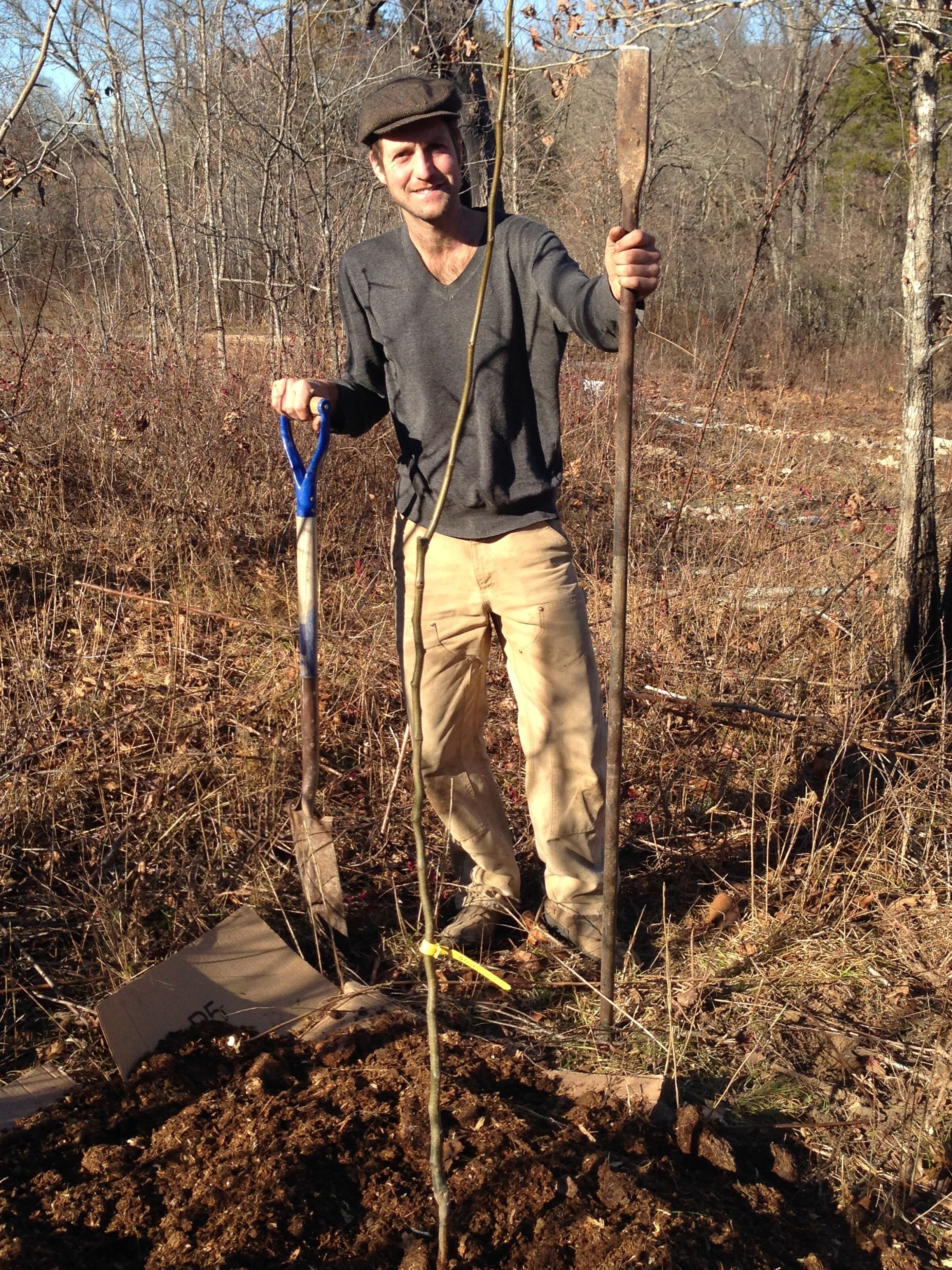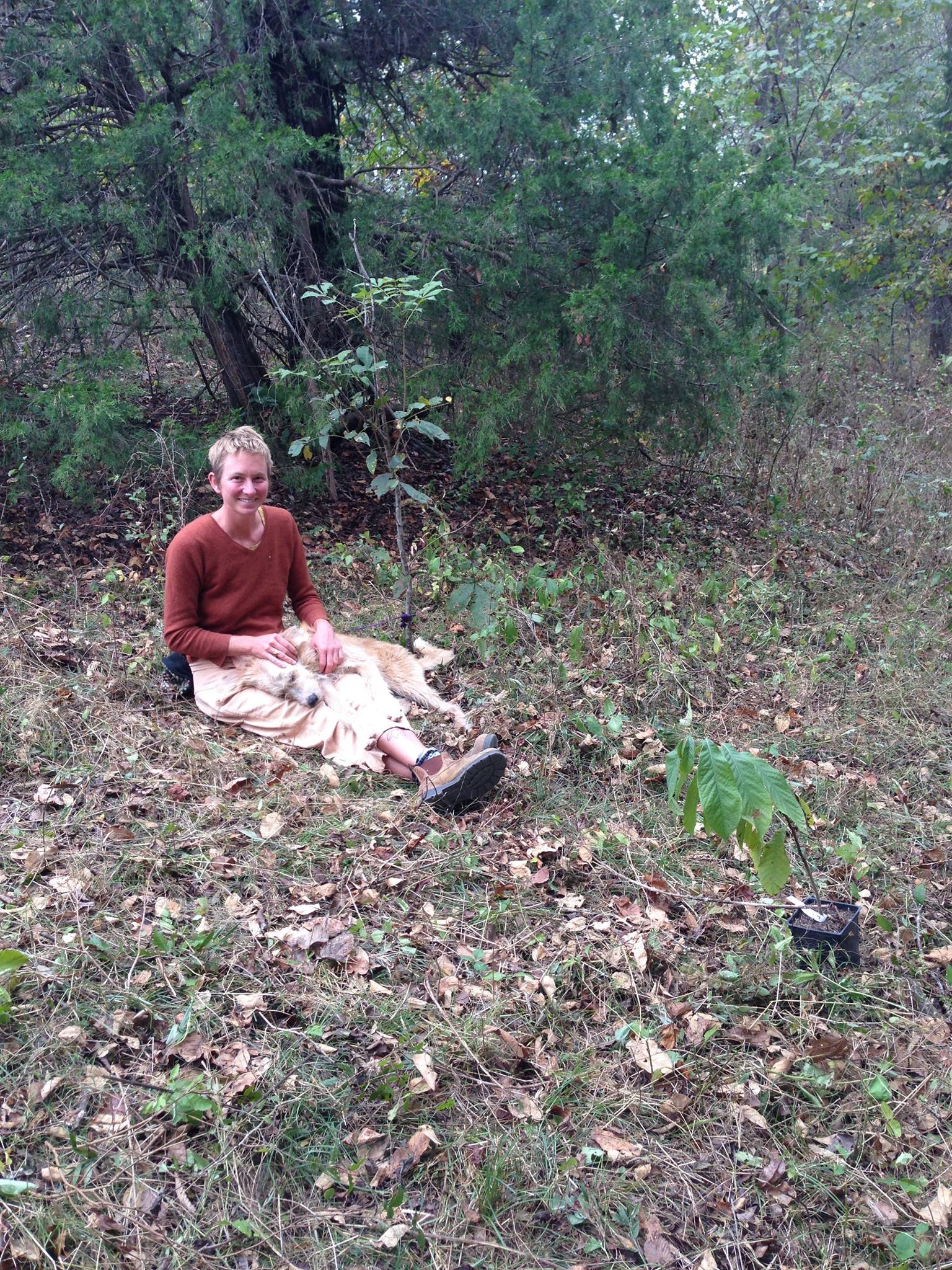If you’re into sustainable food production and/or Permaculture you’ve probably heard of Food Forests. The concept isn’t new, but is slowly reaching a wider audience.
Establishing one can be expensive and time consuming and there isn’t much funding for these projects. But what if you could get paid to plant one?

Our "Paw Paw" Grove in a section of our Food Forest.
Years prior to "landing", I distinctly remember sitting in the Talpa, New Mexico library googling for "food forest grants".
Didn't come across any!
This year we had the great fortune to acquire a "conservation grant" that has supported us in planting over 200 trees (hicans, Chinese chestnuts, walnuts, paw paws, mulberries, plums, apples, peaches, almond, apricot, pear, etc), shrubs (hazels, New Jersey tea, blueberries, elderberries) & brambles, our first larger scale planting of a food (and medicine) forest!
Woaaah! We didn't know this existed, but it greatly spurred us on in manifesting our dreams, giving us a grant to do something we were already doing! In this series we're going to share details of:
- What a Food Forest is & how to plant one
- Our mission to plant a food forest
- Educating others about getting the grant.
Food Forest Layer Web
Our Mission/vision
Ever since we were introduced to Permaculture, we had a burning desire to create a thriving and productive ecosystem that mimicked nature. We were called to get our feet on the ground and put our hands, hearts and heads to good use. Since purchasing 18 acres in the Ozarks, we have been working diligently towards this dream.

Hardy Kiwis, a perennial frost hardy vining plant with delicious kiwi fruit, and Strawberries potted up for future planting. We got the kiwis at a local plant auction and potted up the strawberries from a neighbor's errant garden pathway. It's great to slowly accumulate plant genetics in this way for future planting.
We believe in forging new pathways of culture that weave traditional ways within a contemporary context. Perennial agriculture fits the bill here as we are allying with species that meet our needs without much input from us, not choosing to create yearly natural disasters (tilling does just this). It’s not that we’re lazy, we just want to have our needs (and those of our community) met while still having the time and space for leisure and recreation.

An example of a food forest "plant guild" on our land. Sorry the image is not clear, but you get the gist. Asparagus and comfrey in the understory. An aronia (chokeberry), rasperries at midlevel. Paw Paw, native dogwood and persimmon as canopy species and a native tasty grape vining at that layer.
A big part of why we’re doing this is also to be an example of what is possible in the realm of agriculture. On the whole the picture isn’t very pretty these days and we are called to create something beautiful and productive. There are many others committing their lives to creating diverse and productive food systems and the more examples we have that show what is possible, the more options we all have to follow suit.

Ini planting a pear tree.
The model of a food forest is one that has infinite variation, and we wanted to co-create one itineration of it. So why plant a food forest?
Why Plant a Food Forest
A food forest aka edible forest garden is a design system that mimics a natural forest setting.
In it is included multiple layers that are found in a diverse forest ecosystem. From the top down, we see the canopy layer, medium to small trees, shrubs, herbaceous layer, ground cover, root layer and vining. Some also include fungi and insects as part of the layers, but the core concept remains. The principles of such a diverse system is the foundation of perennial agriculture.
We are designing and planting a system that will produce a variety of food, medicine, fuel, fiber and more while fully utilizing space and the synergy between species.
Why Food Forest
Most food producing systems such as annual gardening and orchards are fairly one dimensional.
They are focused on one species and are limited in their scope. A food forest takes into consideration 3 dimensional space and also includes the 4th dimension of time. This means we are planting with the future in mind and are planning for future abundance.
With the multiple layers of complexity in a food forest we are creates a more synergistic system where elements of the system support each other.

Wren planting strawberries in a mixed native wildflower (pollinators, beauty), medicines and goji planting.
Getting the Grant
We've been slowly buying trees, starting seeds, and sharing genetic biodiversity with friends in an effort to establish our food forest the slow and organic way, which is awesome. Building buildings and establishing ourselves on the land has taken a lot of our resources and we haven't forked out loads of cash to plant trees. This all changed when our friend told us about a grant she had received to get $$ to plant trees & shrubs on her land.
Ini talking with our local extension agent while she was here for a visit. Many people have warranted hesitancies about getting government grants/funding, but it's really not as scary as you may think. We have an awesome agent who is very supportive and clear in helping us get funding and telling us the guidelines. It's really fantastic; we're very blessed!!
We talked with our local extension agent who helped us get the grant. It includes a yearly sum of money to plant trees and shrubs. In making this agreement, which is titled a conservation grant, we set aside part of our land that is forested and promise not to deforest it. In exchange, we choose sections of land to plant trees and shrubs. It's that simple. In tomorrow's post, we'll walk through the exact steps and names of this grant so you can see if you'd like to apply for it, too.
2017's Food Forest Planting
We got paid to establish our Food Forest!!
In fall 2017, we needed to plant 0.4 acres out with shrubs and trees. We chose to buy Hazelnuts, New Jersey Tea, Paw Paws, Chestnut, and Hicans.

This is a cleared area with New Jersey Tea, Hazelnuts & Chinese Chestnuts. It may not look like much now, but in 5 years it will be cool to look back on this photo while we are harvesting root and leaves from the NJT, Chestnuts and Hazels!
We set to clearing the land where we'd do the planting and made a map of the space based on the allotted acreage.

Wren clearing with a brush scythe. We don't use machines to clear the land, but go bit by bit working with hand tools. This allows us to work on a human-scale and not clear too much land at once that we'll be unable to work with. You could brush hog or clear cut an area, but it will grow back much faster than a family-scale planting could plant it. It's important to go at a pace and scale that works for you.
Fall and spring are great times to plant trees as they wont undergo the stresses of high heat and drought. It gives the roots time to establish.

Wren sitting with Luci in the Paw Paw Grove
Developing a Food Forest is a slow and steady thing. It doesn't have immediate rewards and is a long term plan, but one that brings great dividends.

Chinese Chestnut. After the Chesnut blight that took out most American Chestnuts, we can plant the quite similar Chinese Chestnut to still benefit from this tasty nut.
Investing in one's future and thinking of future generations is a really important aspect of life. To us, there really isn't a better way to do this than to plant food forests. It's a magnificent way to plan for your future self. What could be better than a basically self-supporting ecosystem of fruit, nuts, greens, medicines, animal forage, tool and building making materials, etc?
Plant it now and enjoy it for years to come.
UPDATED (CLICK LINK TO READ POST): In tomorrow's post we’ll share THE DETAILS how YOU can get the grant and walk through the steps & of how to apply for one.
In Part 3, we'll share what we're planting now and some basics of HOW TO plant a Food Forest and the some details and examples of the design and planning that goes into it.

